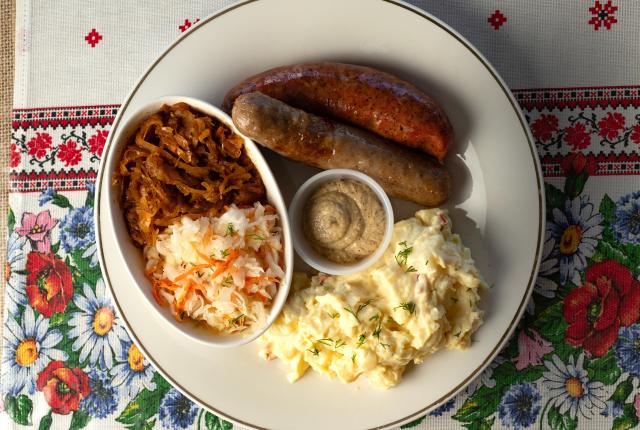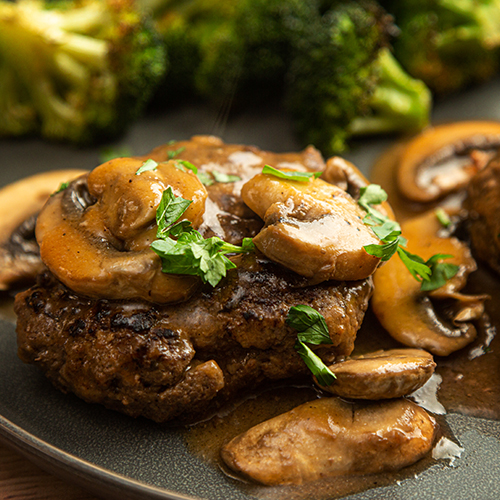Sausage and Sauerkraut: A Flavorful Journey Through Central European Cuisine
Sausage and sauerkraut’s pairing traces its roots to Central European cuisine, particularly in Germany, Austria, and Poland where it remains a staple. German immigrants introduced this combination to the United States in the 19th century, making it popular in American kitchens over time.
In Germany, sausages like bratwurst and knackwurst are commonly used, and the preparation often involves slow cooking. Sauerkraut, a fermented cabbage with a distinct tangy flavor, complements the richness of the sausage. The dish symbolizes comfort and tradition, often featured in Oktoberfest celebrations and family gatherings.
Nutritional Benefits of Sausage and Sauerkraut
The nutritional profile of sausage and sauerkraut offers a balanced mixture of protein, probiotics, and essential vitamins. Sausages, typically made from pork, chicken, or beef, provide a substantial amount of protein, essential for muscle maintenance and overall body function.
Sauerkraut, being a fermented food, contains probiotics which aid digestion and support a healthy gut microbiome. It’s also rich in Vitamin C and K, crucial for immune system support and bone health. When combined, sausage and sauerkraut create a meal that’s not only satisfying but also nutrient-dense, contributing positively to a balanced diet.
Key Ingredients and Varieties
Types Of Sausage Suitable For Pairing
Sausages come in various types that pair well with sauerkraut. Each type brings unique flavors to the dish, making it versatile and exciting.
- Bratwurst: A German favorite, bratwurst is made from pork, beef, or veal. It’s seasoned with spices like nutmeg, marjoram, and ginger.
- Knackwurst: Known for its garlic flavor, knackwurst is short and plump, often made from pork and beef.
- Weisswurst: This white sausage is made from veal and pork back bacon. It’s mild, with parsley, lemon, and cardamom seasoning.
- Kielbasa: A Polish sausage, kielbasa is usually made from pork or a combination of pork and beef. It has a smoky flavor and firm texture.
- Italian Sausage: While not traditional, Italian sausage can pair well. It comes in sweet or hot varieties, seasoned with fennel or chili peppers.
Different Styles Of Sauerkraut Preparation
Sauerkraut varies in preparation styles, affecting its flavor and texture. Each style offers a distinct taste experience, complementing different sausages.
- Traditional German Sauerkraut: Fermented for several weeks, this style includes caraway seeds and juniper berries, giving it a robust flavor.
- Bavarian Sauerkraut: Sweeter than other styles, it’s often cooked with apples and onions, offering a balance to savory sausages.
- Polish Kapusta: Known as kapusta, this variation often includes mushrooms and bacon, providing a hearty, rich taste.
- Alsatian Sauerkraut: From the Alsace region, this version is typically cooked with white wine and a variety of meats, adding complexity.
- Quick Sauerkraut: Made quickly by pickling cabbage with vinegar and salt, this style is less fermented but still tangy and crisp.
Different sausages and sauerkraut styles combine to create unique and flavorful meals, celebrating culinary traditions with every bite.
Cooking Methods and Tips
Best Practices for Perfect Sausage and Sauerkraut
To create a flavorful sausage and sauerkraut dish, follow these best practices:
- Select Quality Ingredients: Choose fresh sausages like bratwurst, knackwurst, or kielbasa, and opt for high-quality sauerkraut. Look for sauerkraut with live cultures for additional health benefits.
- Slow Cooking: Cook sausages slowly over medium heat. This ensures the sausages cook evenly and retain their juiciness. Sauerkraut can be simmered with a bit of liquid (such as beer or broth) to enhance its flavor.
- Flavor Enhancers: Add onions, apples, or caraway seeds to your sauerkraut. These ingredients complement the tangy flavor of sauerkraut and add depth to the dish.
- Proper Pan Usage: Use a heavy-bottomed skillet or Dutch oven for even cooking. This helps prevent scorching and allows for proper heat distribution.
- Cooking Liquid Choices: For richer flavor, cook sausages and sauerkraut in a mix of beer or apple cider. These liquids enhance the dish’s traditional taste.
Common Mistakes to Avoid When Cooking
Avoid these mistakes to ensure your sausage and sauerkraut turns out perfectly:
- High Heat: Cooking sausages on high heat causes them to cook unevenly and can lead to a burnt exterior. Stick to medium or medium-low heat to avoid this.
- Direct Boiling: Boiling sausages directly leads to a loss of flavor and results in a rubbery texture. Instead, simmer sausages gently in a flavorful liquid.
- Ignoring Sauerkraut Moisture: Not adding enough liquid to sauerkraut while cooking makes it dry. Ensure there’s enough broth, beer, or cider to keep it moist.
- Overcrowding the Pan: Overcrowding sausages in the pan causes uneven cooking. Cook sausages in batches if necessary to ensure evenness.
- Skipping Rest Time: Let sausages rest for a few minutes after cooking. This helps retain juices and enhances the overall flavor.
Following these tips ensures a memorable sausage and sauerkraut experience, marrying the robust flavors of sausage with the tangy zest of sauerkraut.
Serving and Pairing Suggestions
Ideal Side Dishes and Condiments
Ideal side dishes and condiments can elevate your sausage and sauerkraut experience. Potatoes, bread, and mustard are prime choices, enhancing the flavors and balancing the savory and tangy notes.
- Potatoes: Roast potatoes, mashed potatoes, or potato salad pair seamlessly with sausage and sauerkraut, providing a hearty base.
- Bread: Rye bread or crusty rolls offer a traditional touch, perfect for sopping up juices and adding texture.
- Mustard: Dijon, whole grain, or spicy brown mustard complement sausage well, adding a sharp flavor contrast.
Include pickles, apple sauce, and caraway seeds for variety. These add diverse textures and flavors: pickles are crisp and tangy, apple sauce is sweet, and caraway seeds provide a distinct, earthy taste.
Wine and Beverage Pairings That Complement the Flavors
Wine and beverage pairings enhance the sausage and sauerkraut experience. Choosing the right drinks accentuates the dish’s rich flavors.
- Beer: German lagers, pilsners, and wheat beers complement the dish’s robust flavors. The carbonation and light bitterness balance the sausage’s richness.
- Wine: Riesling, Gewürztraminer, and Pinot Noir are excellent choices. Riesling’s acidity and slight sweetness counteract the sauerkraut’s tanginess. Gewürztraminer’s aromatic profile pairs well with the spices in sausage. Pinot Noir, with its light body and fruity notes, balances the dish’s heaviness.
Non-alcoholic options like apple cider and sparkling water work well. Apple cider adds a sweet contrast, while sparkling water provides a refreshing palate cleanser.
Conclusion
Sausage and sauerkraut is more than just a meal; it’s a celebration of rich cultural traditions and diverse flavors. Whether you’re savoring bratwurst with traditional German sauerkraut or exploring new pairings with Italian sausage and quick sauerkraut, this dish offers endless possibilities. By incorporating the right cooking techniques and pairing suggestions, you can elevate your culinary experience and enjoy a taste of Central European heritage right at home. So, gather your ingredients, embrace the art of preparation, and delight in the timeless combination of sausage and sauerkraut.





